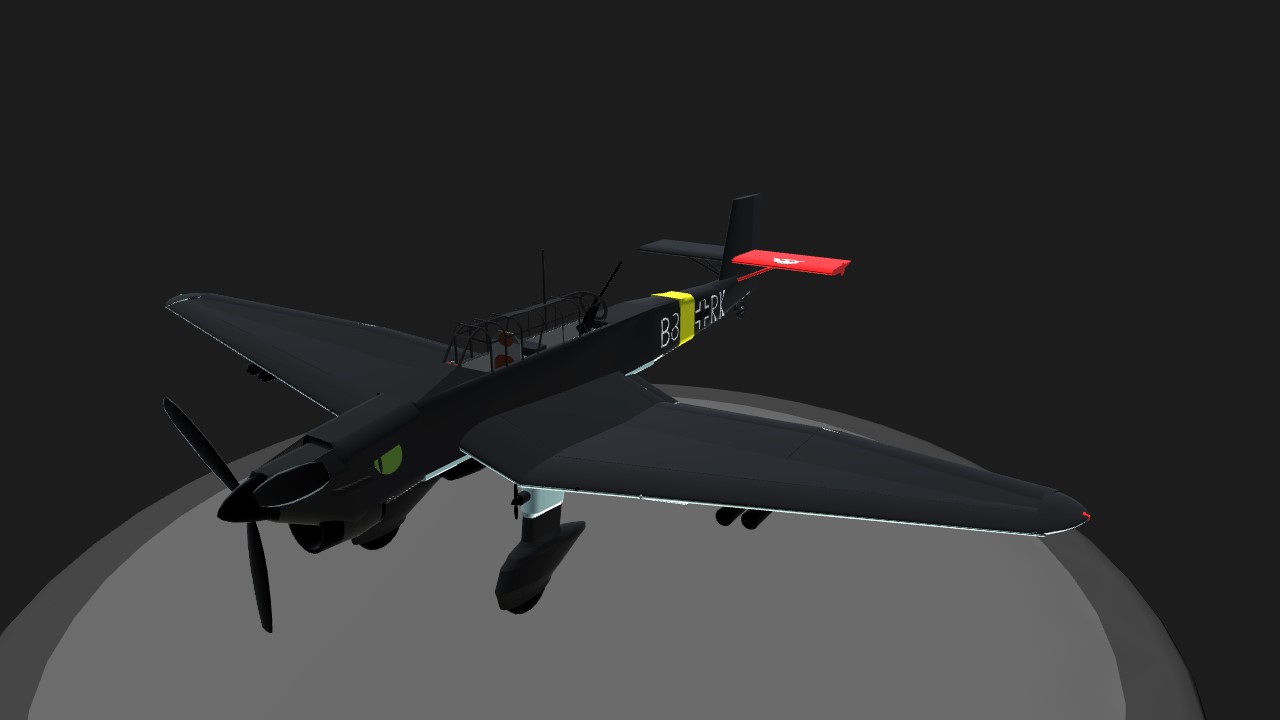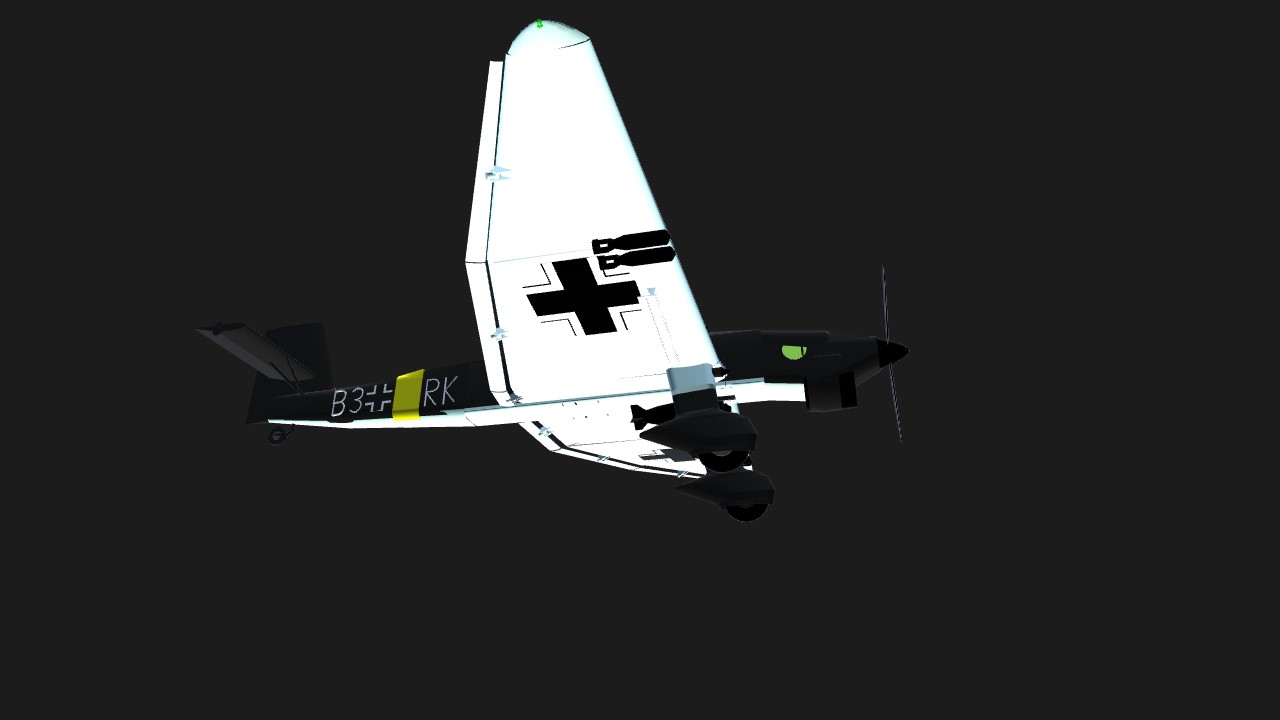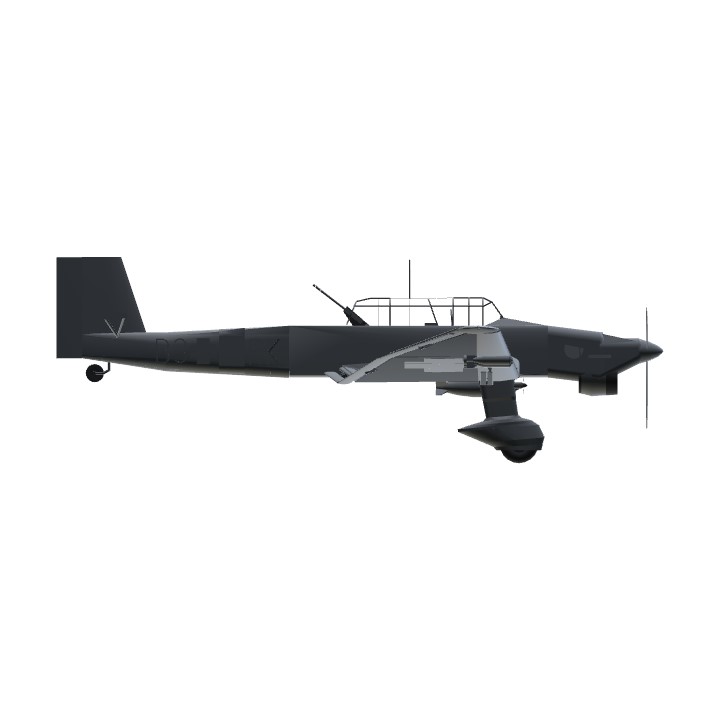
The Junkers Ju87 designed by Hermann Pohlmann, was designed in 1933 with particularly foreign built engines from Great Britain. Due to parts scarcity and inadequate strength of the airframe, construction took until the October of 1935 and yet first flew in the 17th September of 1935 under the designation “Ju87 V1 W.Nr. 4921”.
The V1 variant of the Ju87 Family had Rolls Royce Kestrel V12 cylinder liquid-cooled engine and a twin tail instead of a center mount, however the twin tail designed proved too weak as the plane came crashing down after the test pilot, Willy Neuenhofen attempted to enter an inverted spin.
The Ju87 continued to be perfected starting with the B series this plane is based from. using larger segments of airframes and spars to ease repair and construction.
Operational history of the Ju87 and all variants is everywhere where the third reich set foot upon. From the Spanish Civil war, to the North African Campaign, to the Eastern Front, all the way to Norway. Providing Air support for the German Army everywhere it needs them. The Ju87 became an icon in the Luftwaffe along with the Bf109’s and He111’s. Flying to the bitter end with the Luftwaffe of 7th May of 1945. Official surrender of Germany.
This Ju87 B is inspired by a warthunder skin that I found themed around a Dreamworks film: How to Train Your Dragon, alas it only works for the Bf109 in Warthunder so I decided to reskin and remodel my old Ju-87 which can be found here so I can fly one of my favourite planes with a somewhat fitting skinwithout the hassle of reskinning in Warthunder.
No Ag Controls, another fly and go model.



Larger plane in the works
Specifications
Spotlights
- Typhoon03 5.5 years ago
General Characteristics
- Successors 2 airplane(s)
- Created On iOS
- Wingspan 45.6ft (13.9m)
- Length 38.4ft (11.7m)
- Height 13.0ft (4.0m)
- Empty Weight 8,618lbs (3,909kg)
- Loaded Weight 15,270lbs (6,926kg)
Performance
- Horse Power/Weight Ratio 0.209
- Wing Loading 10.7lbs/ft2 (52.2kg/m2)
- Wing Area 1,428.4ft2 (132.7m2)
- Drag Points 1290
Parts
- Number of Parts 327
- Control Surfaces 5
- Performance Cost 1,353







this plane could be better